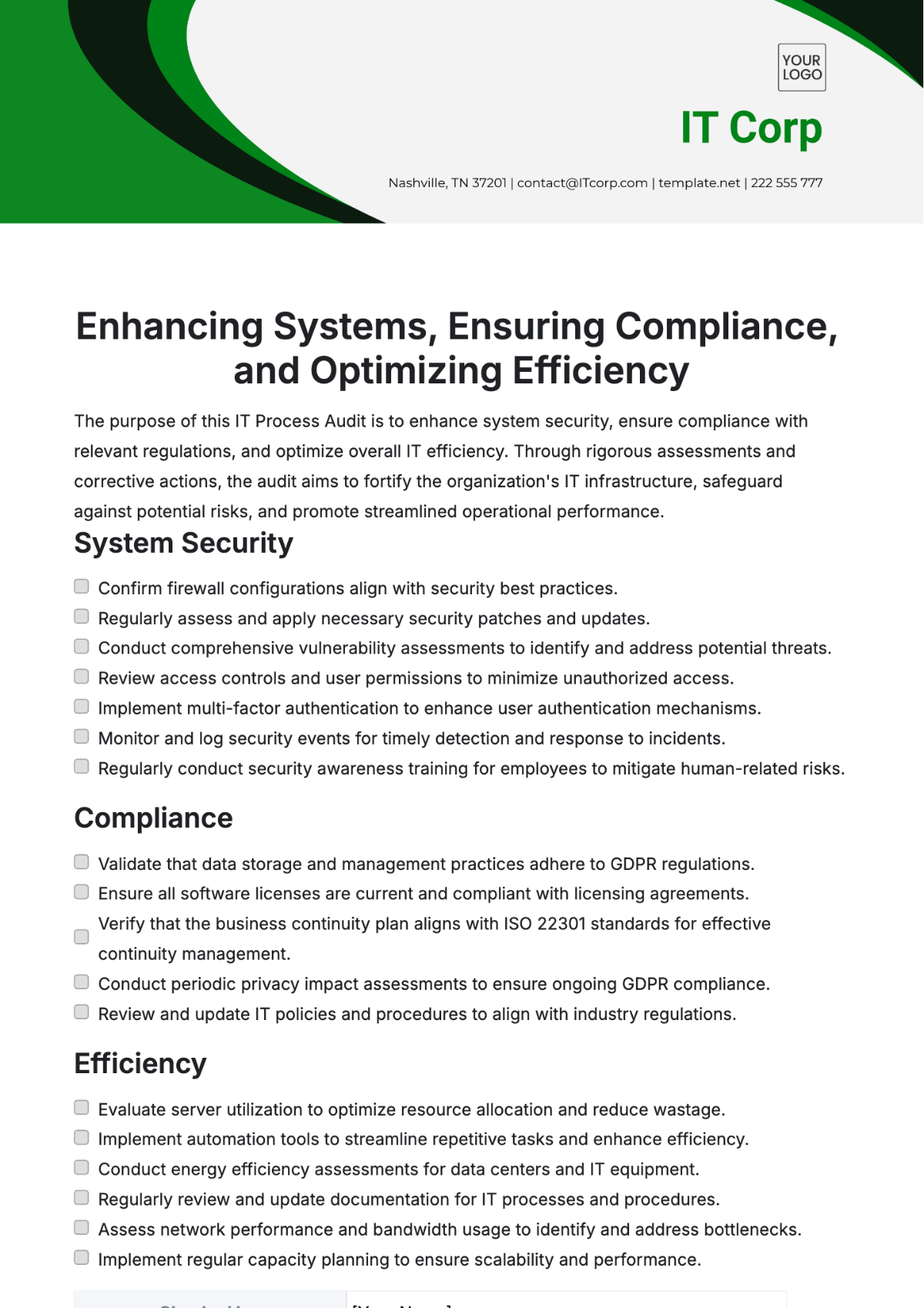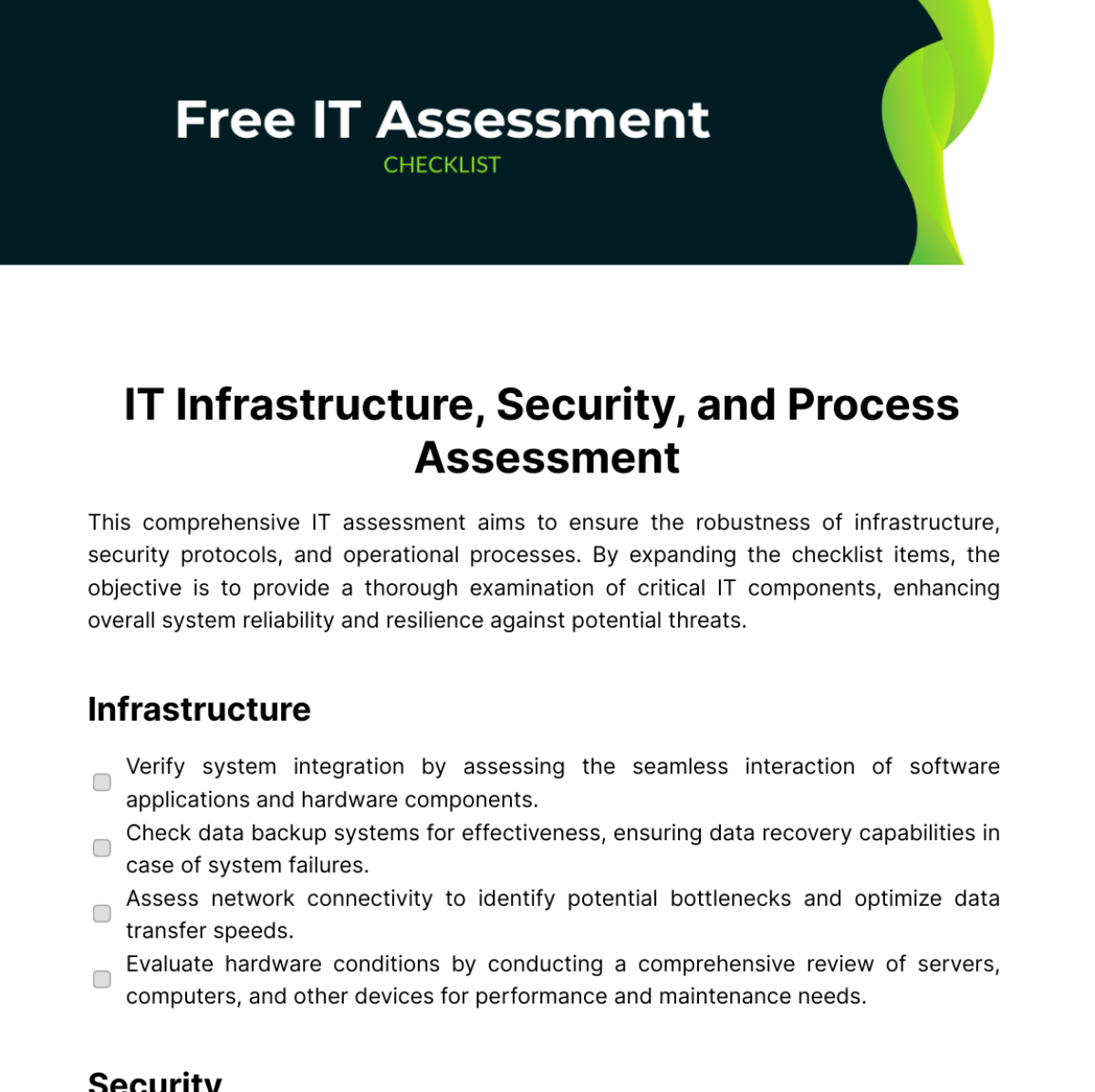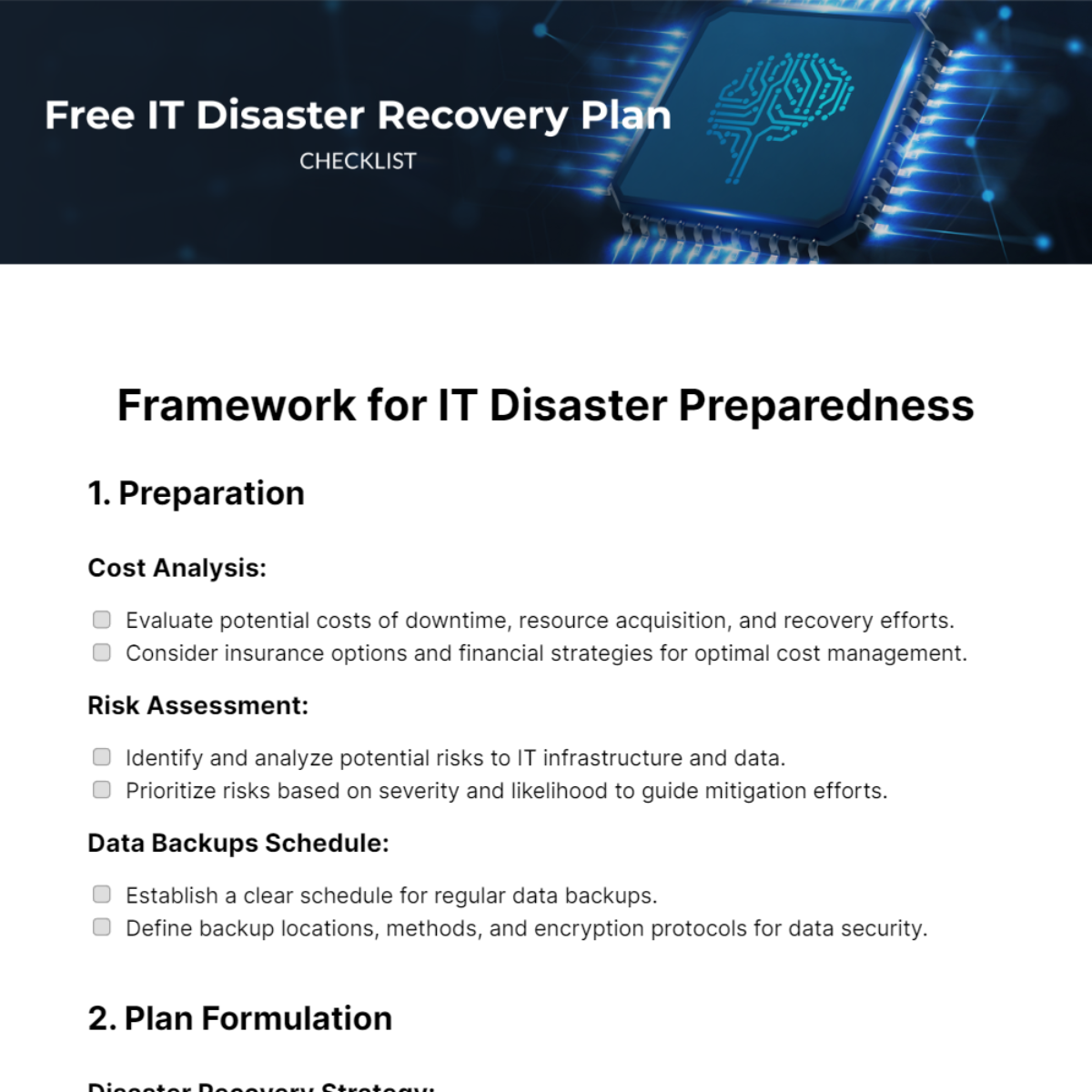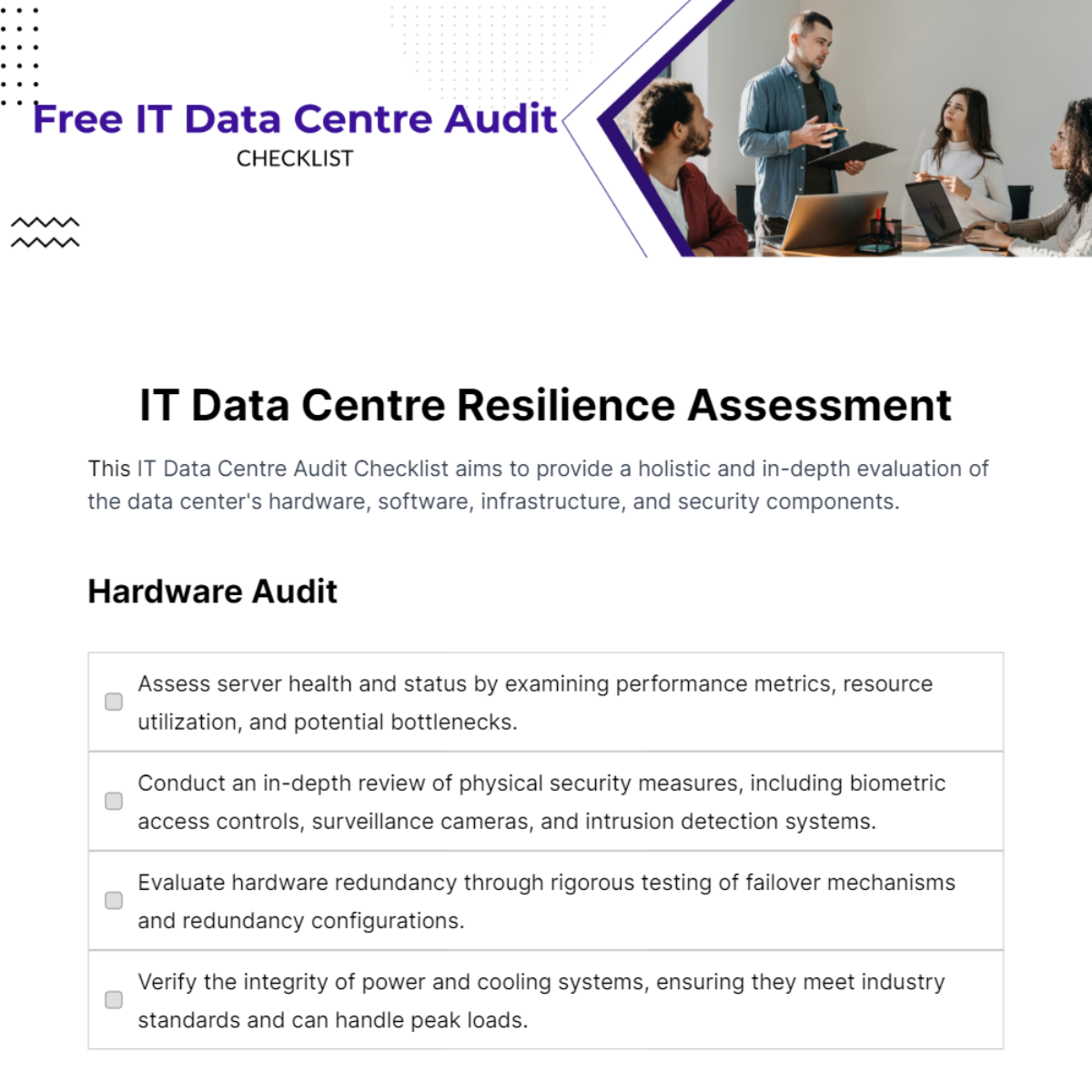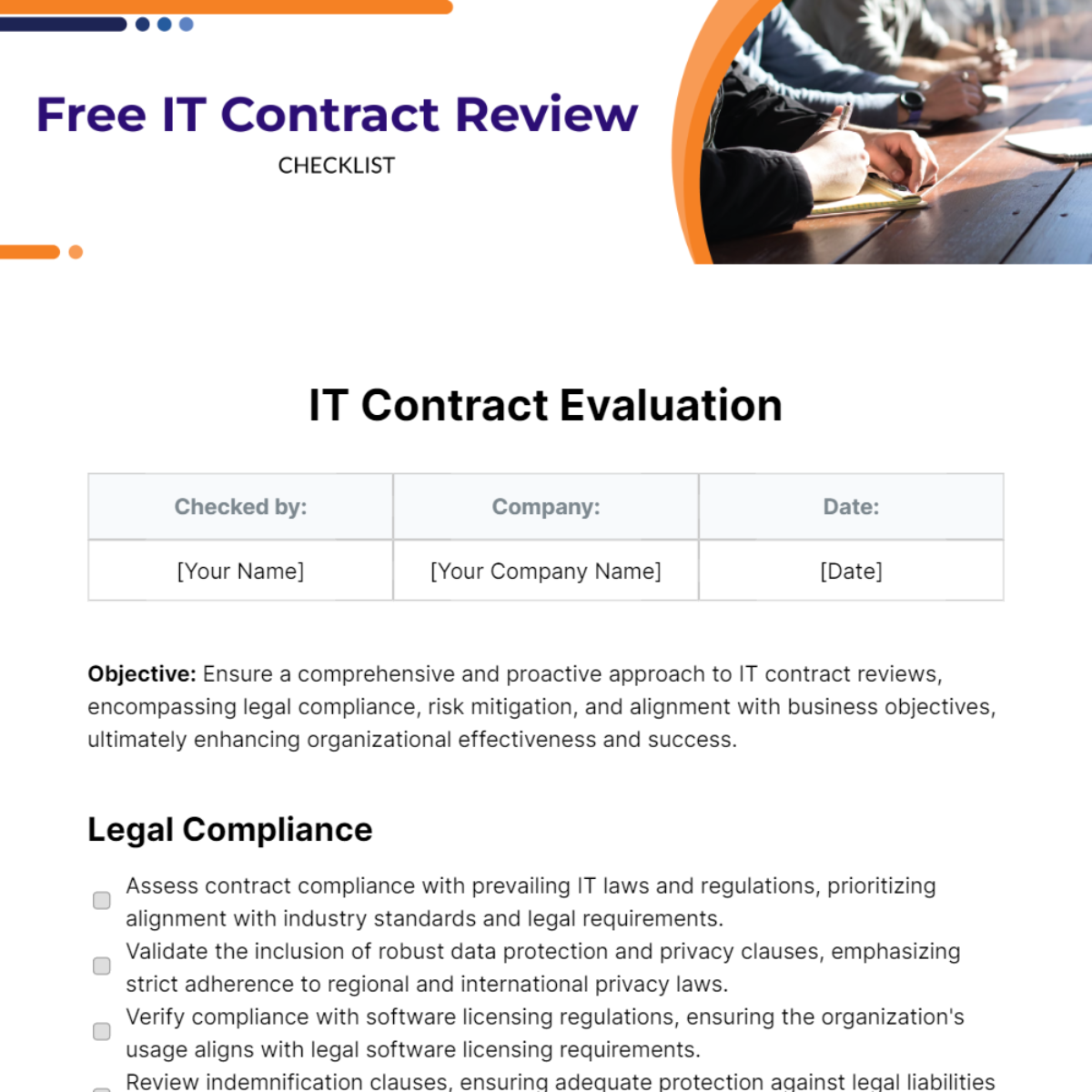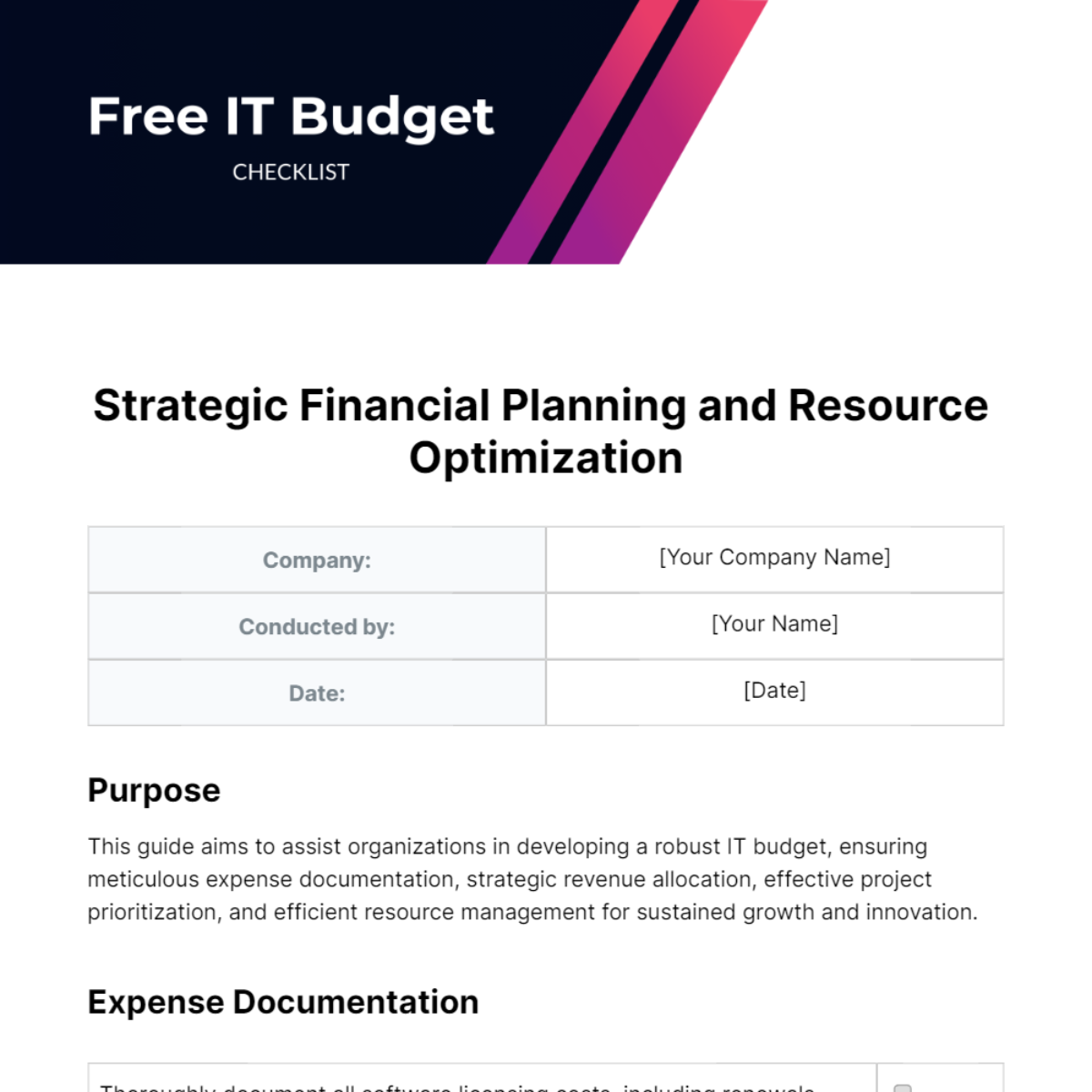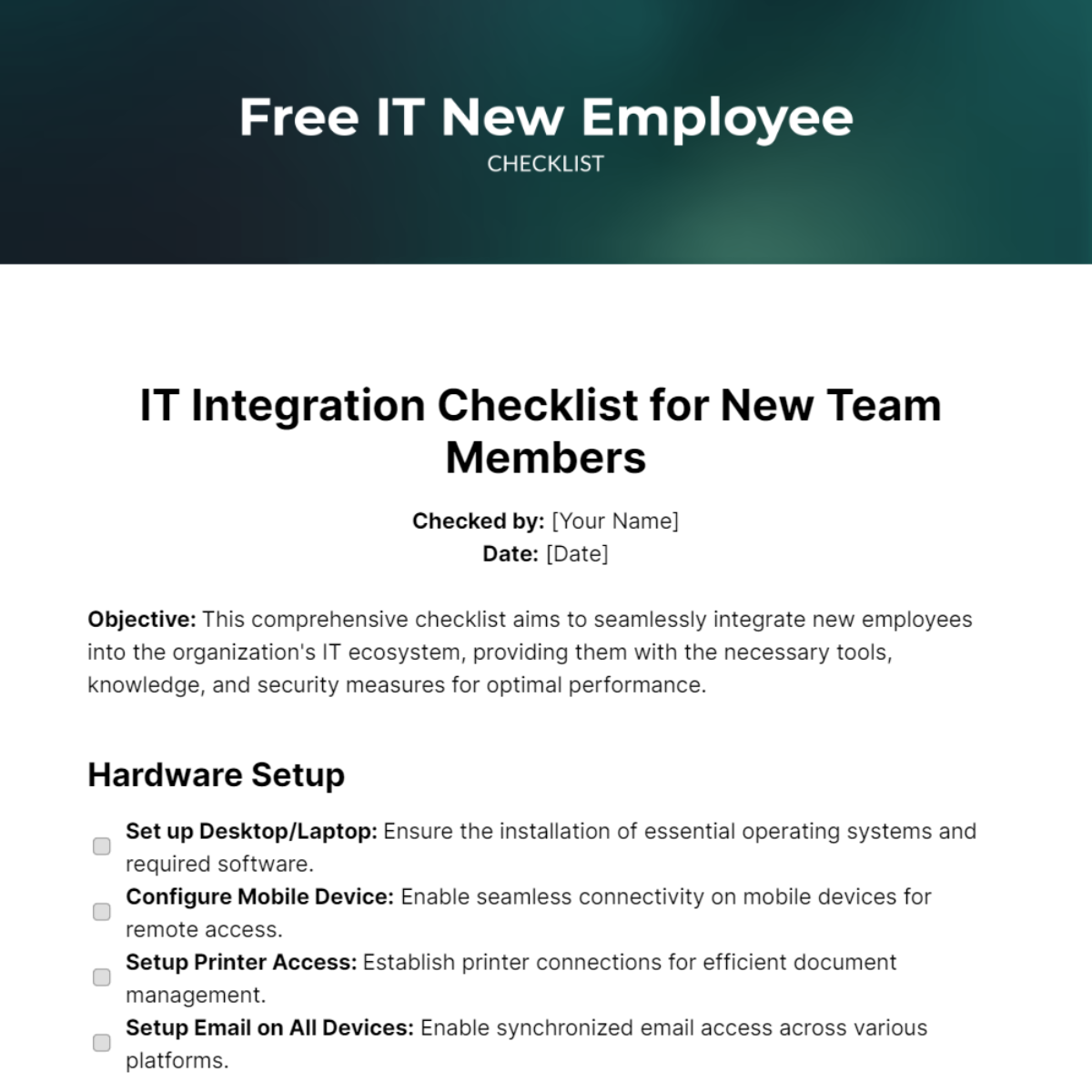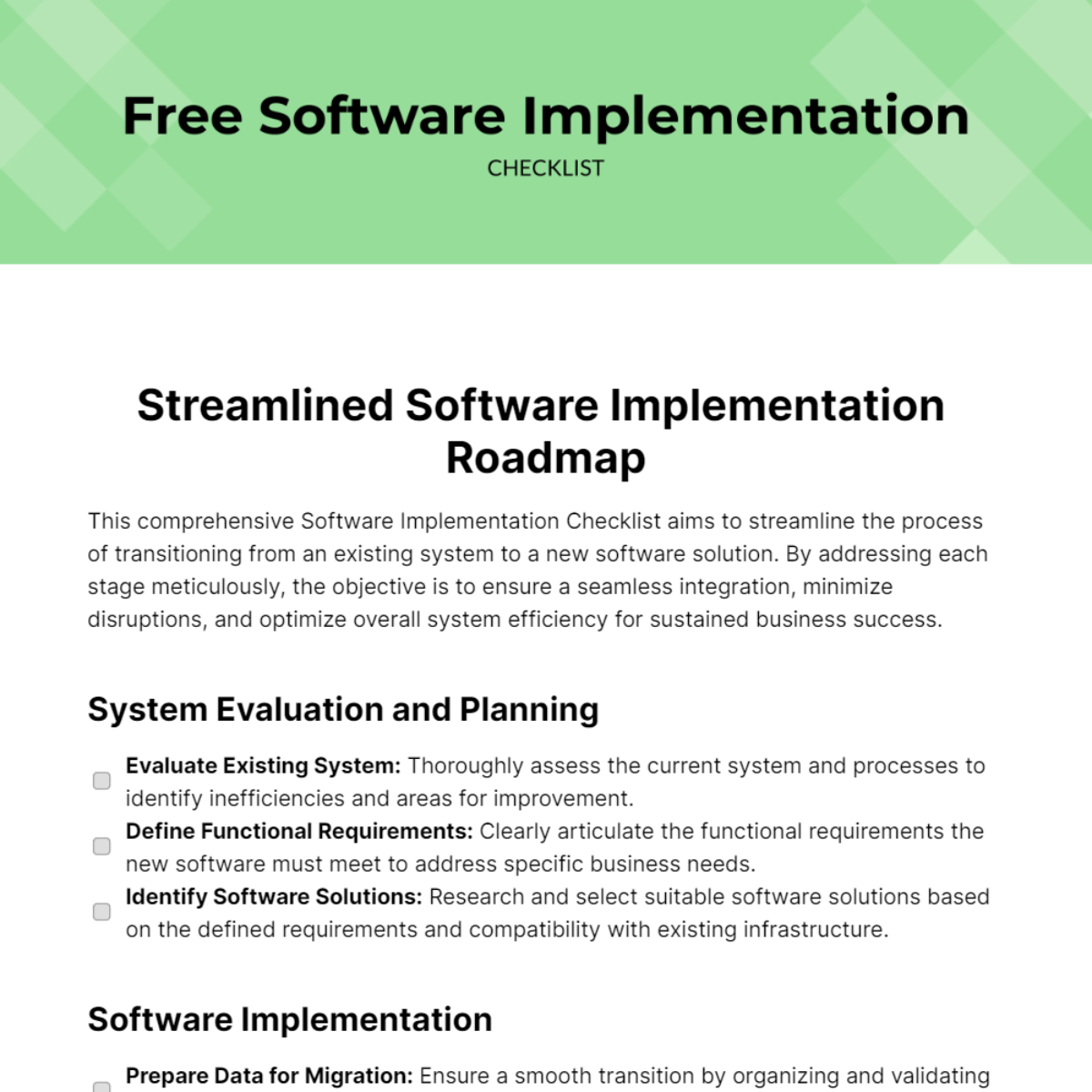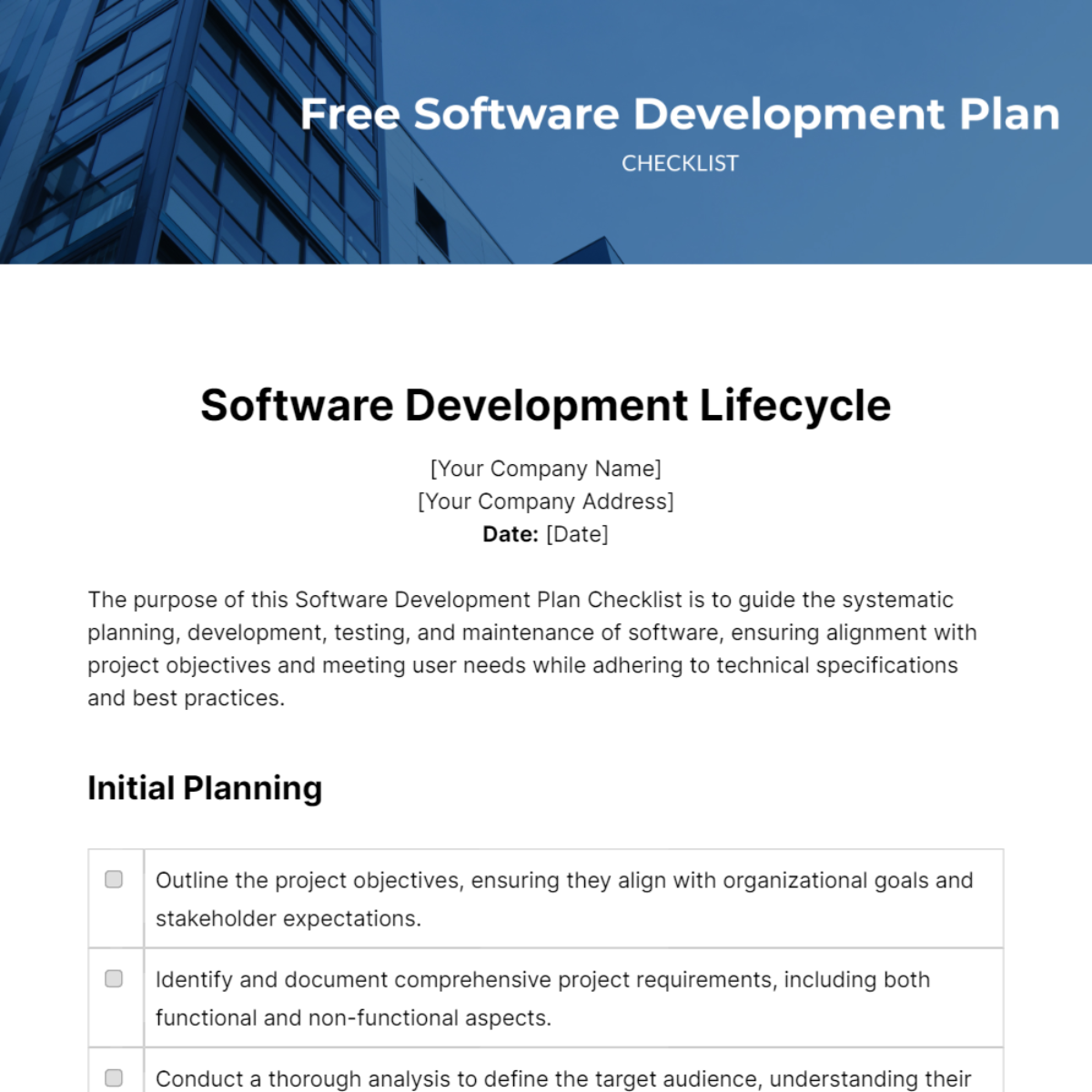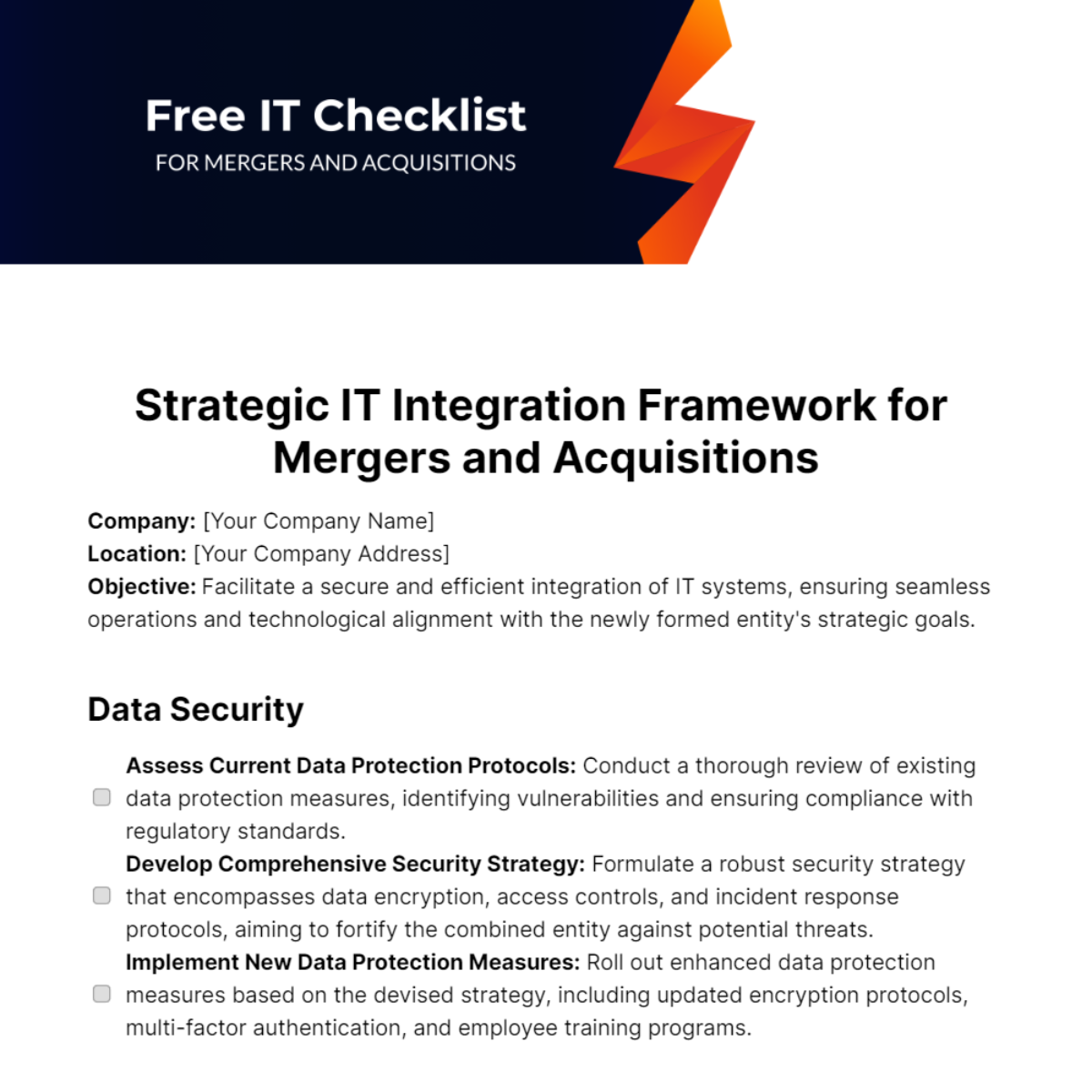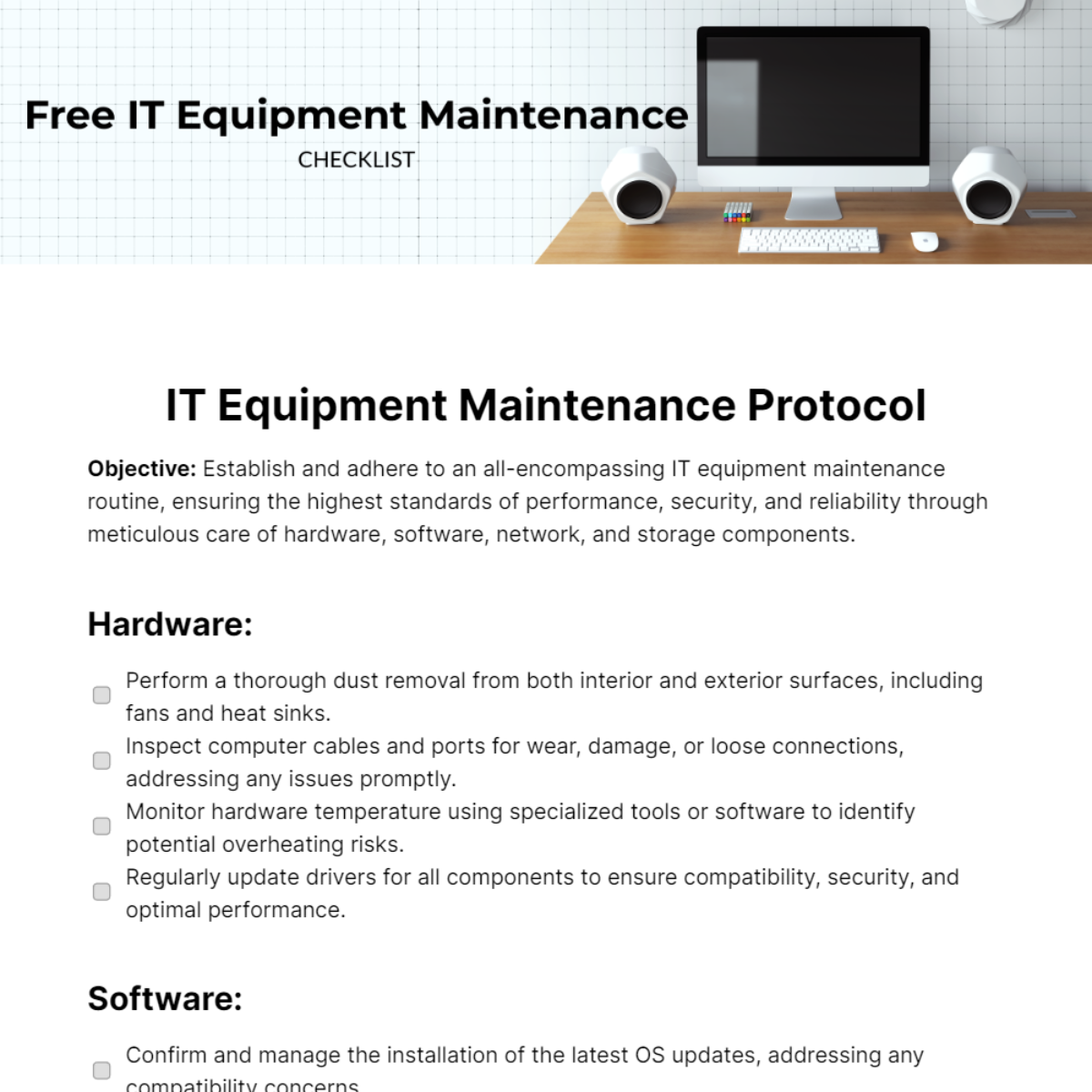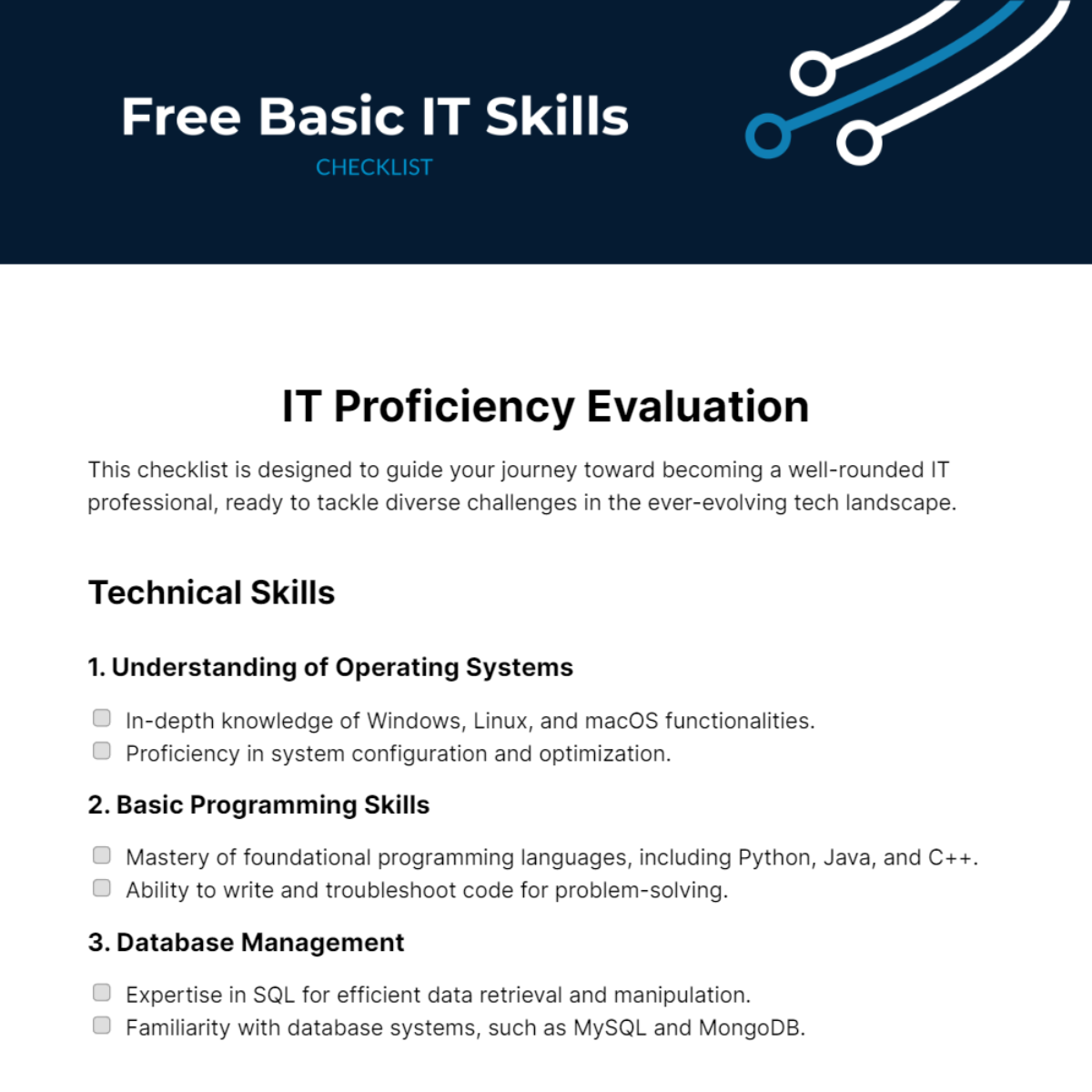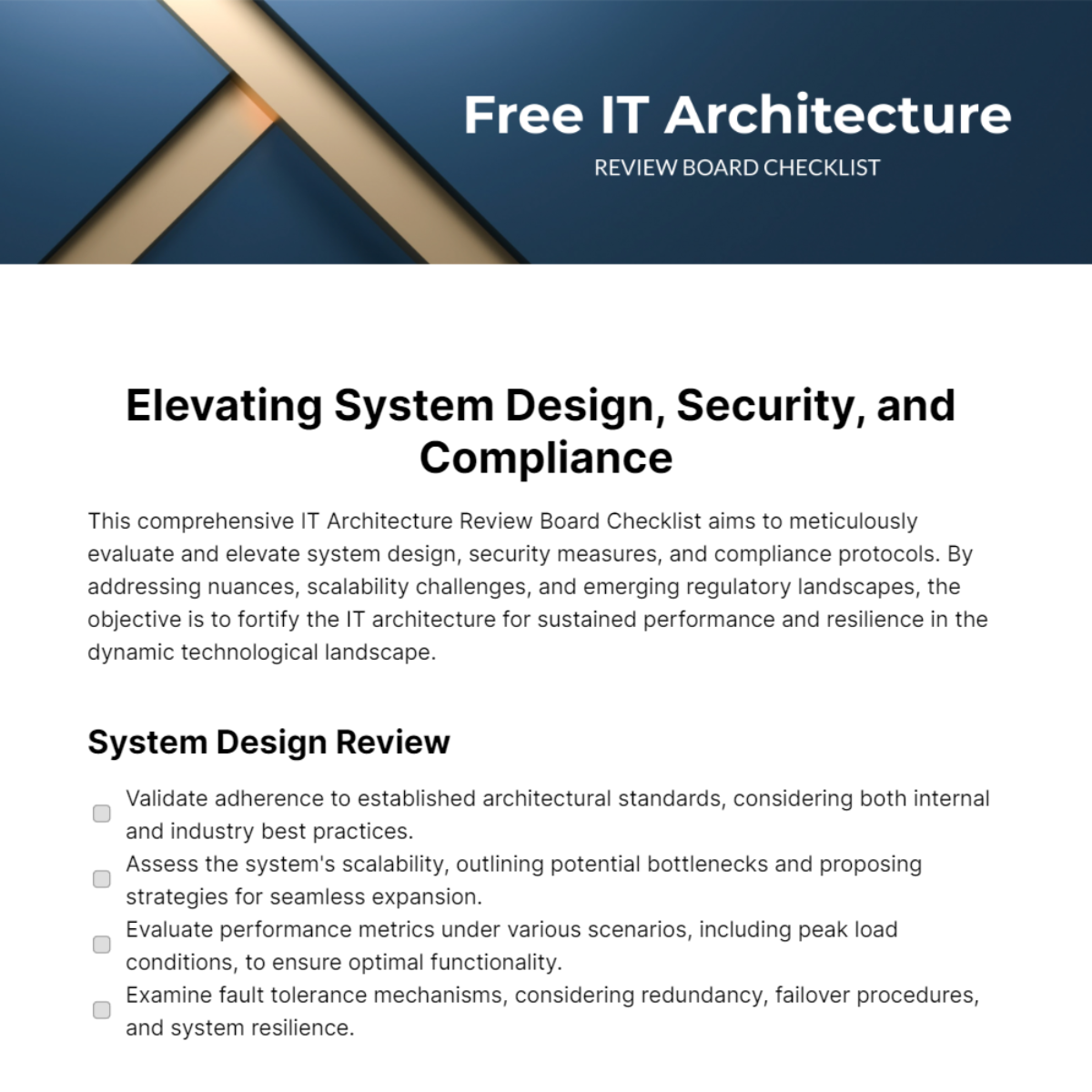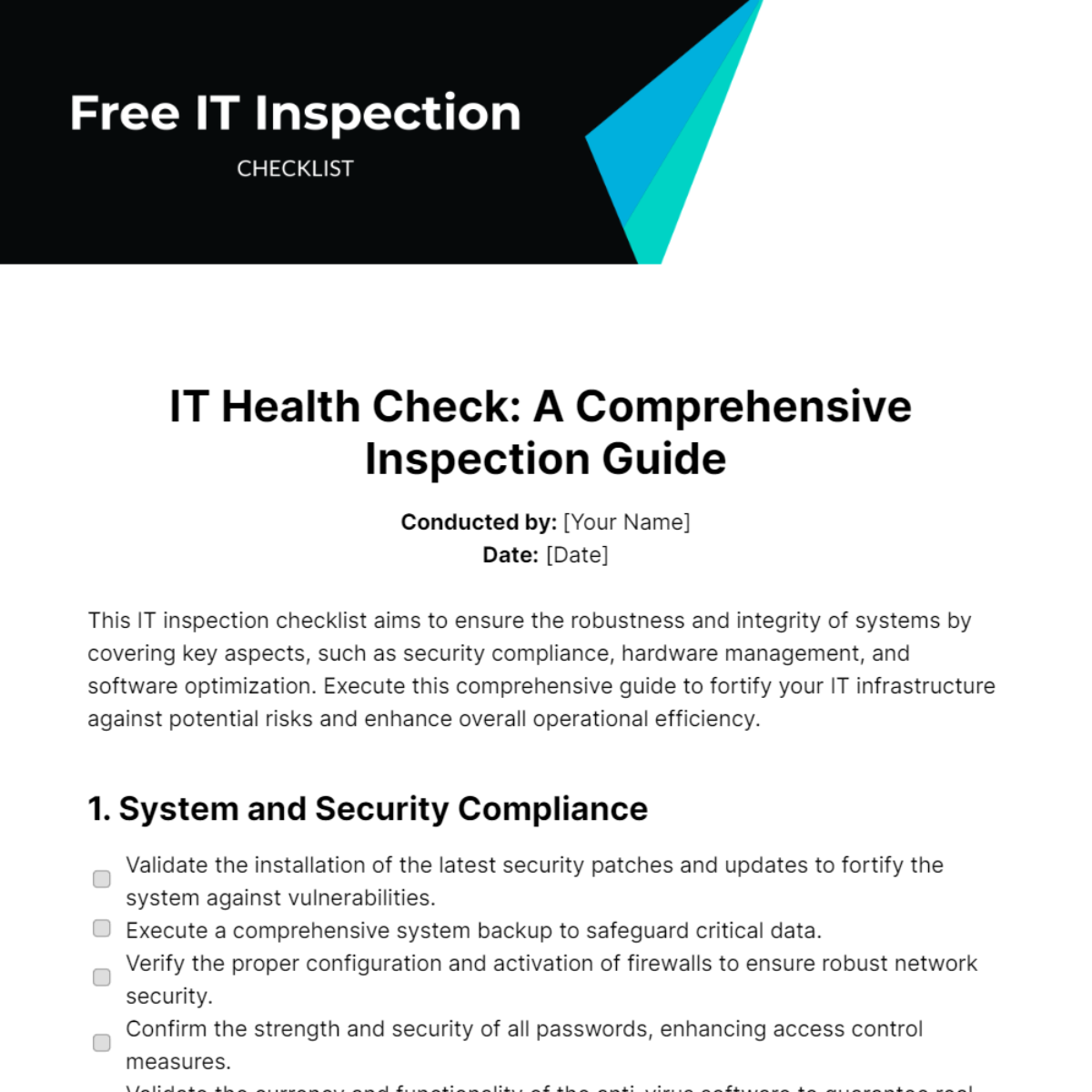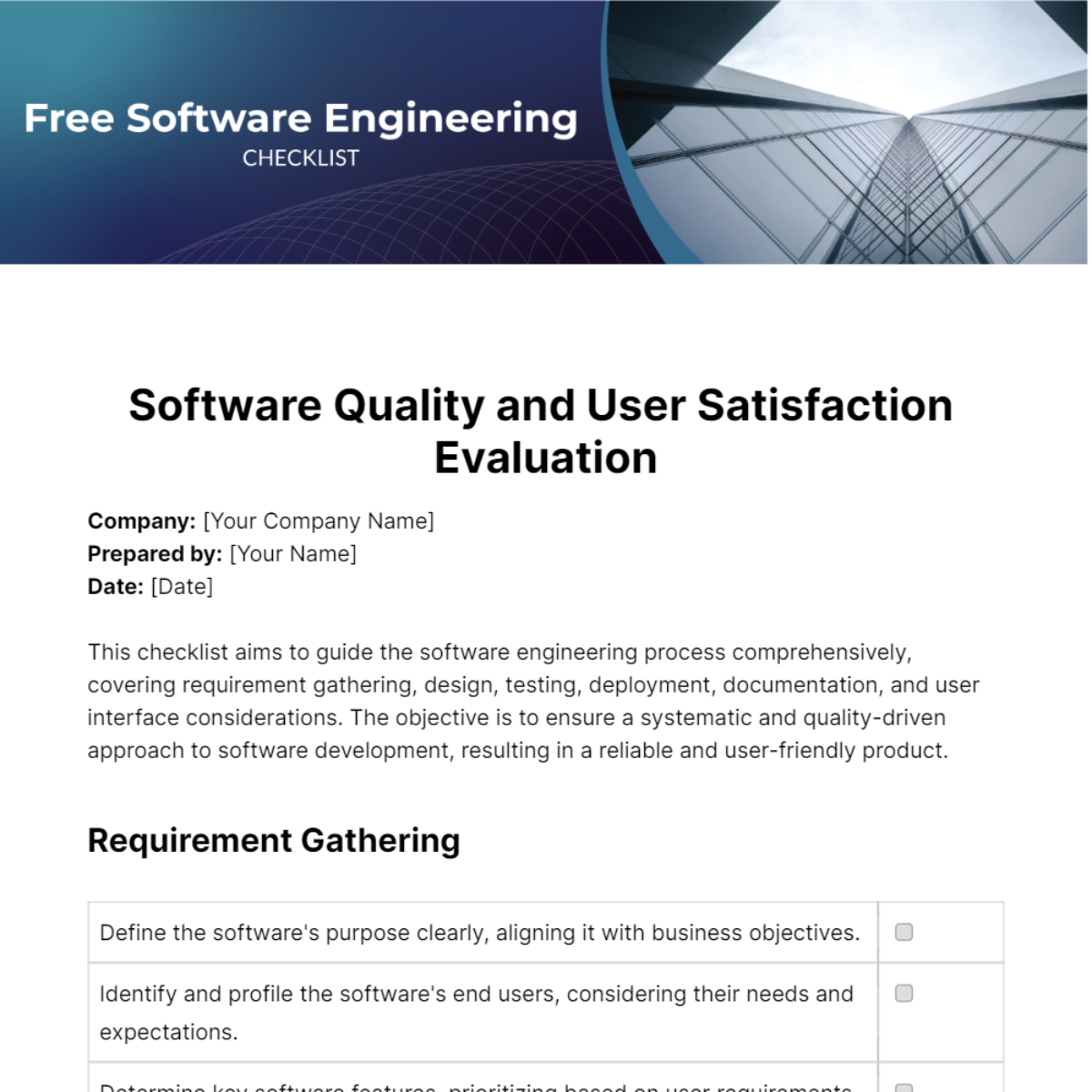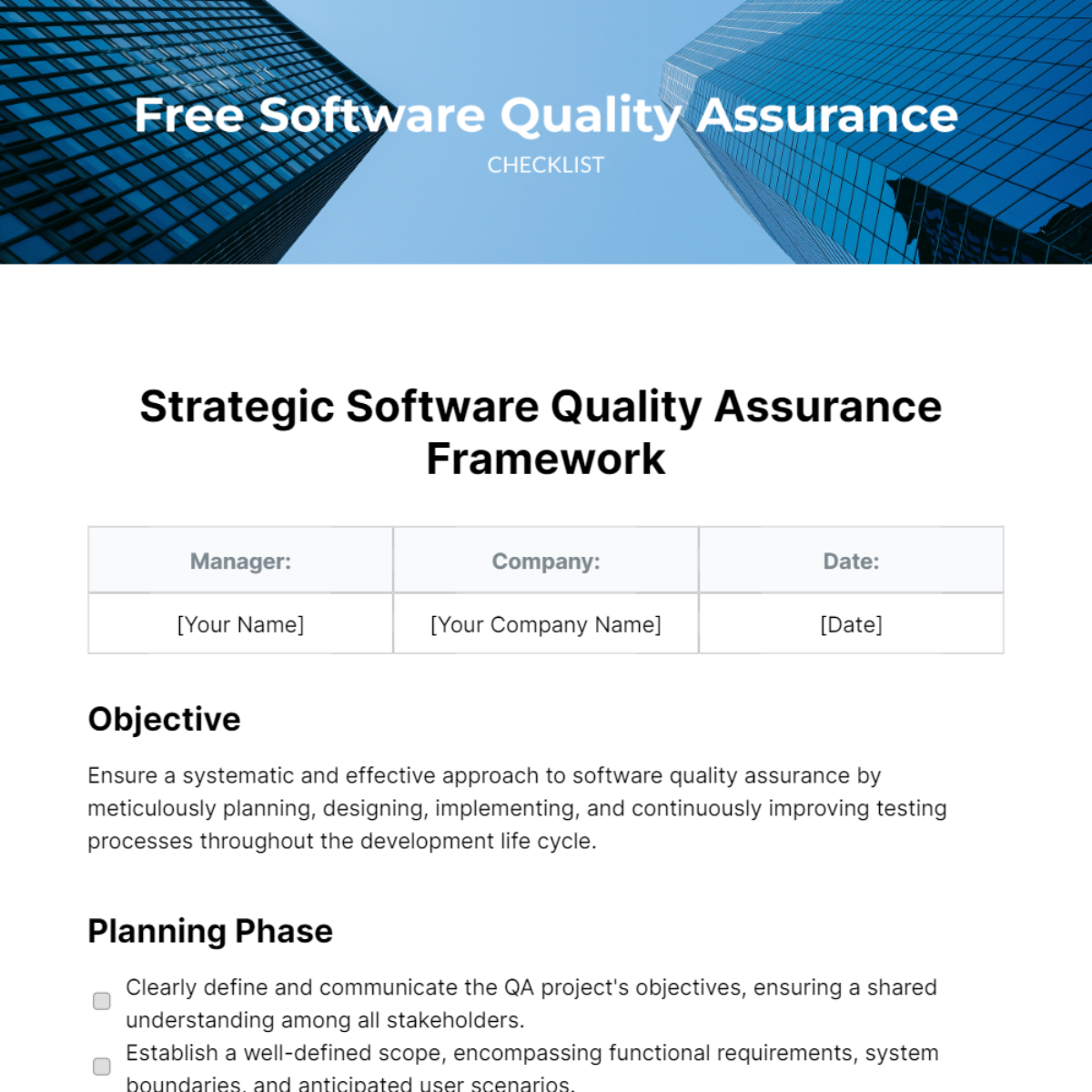Free Network Administrator Checklist Template
Network Administrator Checklist
Prepared by: [Your Name]
Company: [Your Company Name]
Date: [Date]
I. Network Configuration
A. Set Up and Configure Network Devices
Configure routers, switches, firewalls, and other network devices.
Assign static IP addresses as required.
Ensure proper VLAN setup and management.
B. Verify Network Connectivity
Test connectivity between network devices (ping tests, traceroutes).
Ensure DNS, DHCP, and other network services are functioning correctly.
II. Security Monitoring
A. Apply Security Updates and Patches
Ensure all network devices and systems have the latest firmware and software updates.
Patch vulnerabilities as they are discovered.
B. Monitor Network Traffic
Use network monitoring tools to analyze traffic for unusual patterns.
Set up alerts for potential security breaches or unauthorized access.
C. Review Firewall and Security Settings
Ensure firewall rules are up-to-date and effective.
Perform regular security audits on network devices.
III. Network Performance
A. Monitor Network Speed and Bandwidth Usage
Use tools to monitor bandwidth consumption across the network.
Identify bandwidth bottlenecks or issues impacting performance.
B. Test Latency and Connectivity
Regularly test latency between key devices and servers.
Identify and resolve any issues affecting connectivity or performance.
C. Analyze Network Load Balancing
Ensure optimal load balancing across servers and network infrastructure.
Adjust configurations to manage high traffic or peak load times effectively.
IV. Backup Management
A. Perform Regular Data Backups
Set up automated backups for critical network and system data.
Verify that backups are completed successfully without errors.
B. Test Backup Integrity
Periodically test the restoration process to ensure data can be recovered.
Monitor backup logs for any failures or inconsistencies.
C. Maintain Offsite Backups
Ensure that backups are stored securely offsite or in cloud storage.
Verify that offsite backups are regularly updated and accessible.
V. Troubleshooting and Issue Resolution
A. Identify Network Issues
Use diagnostic tools to troubleshoot connectivity, hardware, or software problems.
Investigate network device logs for errors or warnings.
B. Resolve Connectivity Problems
Address common issues such as IP conflicts, DNS failures, or device misconfigurations.
Perform network resets or reboots where necessary.
C. Manage Hardware Failures
Identify failing hardware (e.g., routers, switches, servers) and replace as needed.
Document all hardware issues for future reference and warranty claims.
VI. Documentation and Reporting
A. Document Network Configurations
Keep records of network setups, IP address assignments, and device configurations.
Ensure detailed logs are maintained for any changes made to the network.
B. Maintain Incident Logs
Document network issues, troubleshooting steps, and resolutions.
Create reports for recurring problems and potential long-term fixes.
C. Generate Regular Network Health Reports
Provide detailed reports on network performance, security, and uptime.
Present findings to management or stakeholders for future planning and improvements.
